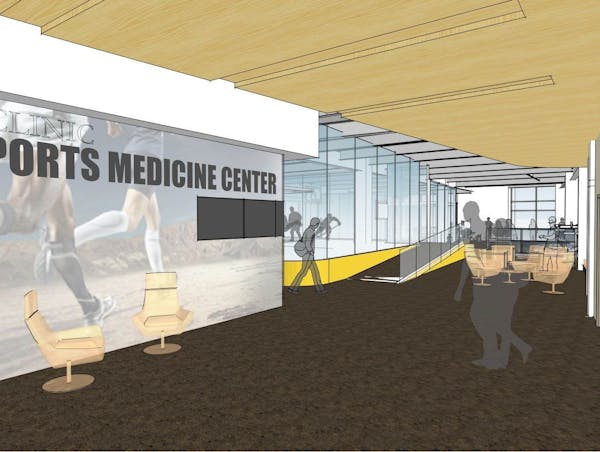Determined to enhance its medical technology prowess, the University of Minnesota opened a state-of-the-art Medical Devices Center in Minneapolis Monday that officials hope will birth more commercially viable products and shore up the U's reputation as a critical medical innovator.
With its modern glass partitions and well-equipped labs, the 8,000-square-foot building replaces a smaller, 5-year-old center three blocks away. The $2.3 million facility features a 3-D virtual design lab, a fully equipped X-ray and imaging lab, an anatomy lab and a mechanical lab complete with drills, punch press, jigsaw and soon a 3-D printer from Stratasys Ltd. in Eden Prairie.
More important, the Medical Device Center cements the U's role in cutting-edge technology that originates in Minnesota. Once criticized for taking too long to get products to market, the U will use the center to connect with corporate partners, engineers and scientists from around the world. In fact, the center will be used by 100 students and serve as a think tank for eight full-time "innovation fellows."
Their job will be to help move prototypes through the commercialization process and into the hands of patients who need them. The original Medical Devices Center helped the U develop 58 patents in the last five years.
Arthur Erdman, director of the Medical Devices Center, hopes to move beyond that. He wants the new center to fully build and rigorously test device prototypes in partnership with companies and other scientists. Erdman said he also wants the facility to navigate through the legal and regulatory minefields and identify the market research needed to create commercially viable products and start-up companies.
"We can do that all, right here, without having to go downtown or across campus," he said, noting that collaborating with other departments will be critical.
If successful, the expanded center could help the U usher 20 to 30 new medical products to market over five to 10 years. Erdman added that the goal could be hampered by new federal health care changes, the new medical device tax, and the recent retreat of angel and venture capital investors in the medical technology industry.
Obstacles aside, if the center succeeds in creating 20 to 30 new FDA-approved medical devices, or techniques, "That's a lot. That output would be on the order of what Boston Scientific does. That's not bad," said Ralph Hall, a Faegre Baker Daniels attorney who also teaches FDA law at the U. The launch of the new center is part of the school's recent push toward innovation, Hall said.
In December, the U's Office of Technology Commercialization proposed two venture capital funds worth a combined $70 million that would provide seed or equity capital to start-ups needing further testing and market research. Last year, it helped the FDA launch a private/public consortium to develop faster regulatory approvals for medical devices. It also developed a consortium of schools and companies to specialize in pediatric medical devices. Over seven years, the U pushed the Minnesota Legislature for funds for new research buildings and a plan to advance its standing in cancer, heart, diabetes, neuroscience and stem-cell research.
Corporations donated about $500,000 worth of medical and diagnostic equipment to outfit the new Devices Center, which is housed in what used to be the garage of the Mayo Building on the East Bank campus. The crown jewel of donations might be the 3-D virtual design lab that was put together by Boston Scientific.
During demonstrations on Monday, lab supervisor Darrin Beekman donned a pair of antenna-laden 3-D glasses and began maneuvering a large imaging table before him. Using his fingers, he was able to virtually enlarge, rotate and dissect images of the heart, veins, arteries and tissue on a massive TV screen. Beekman said scientists and companies will use the giant 3-D imaging device to figure out how to thread catheters through a beating heart or safely implant other devices.
"That room is a lot of people's favorite," said Saurav Paul, director of the center's innovation fellows.
The Medical Devices Center is expected to draw physicians, scientists and engineers from the U and beyond. The center will be open to the public Tuesday from 10 a.m. to 5 p.m. For directions visit http://z.umn.edu/mdcdirections.
Dee DePass • 612-673-7725
The Latest | Germany will resume working with UN relief agency for Palestinians after a review
Boeing's financial woes continue, while families of crash victims urge US to prosecute the company
Billionaire Texas oilman inks deal with Venezuela's state-run oil giant as US sanctions loom

